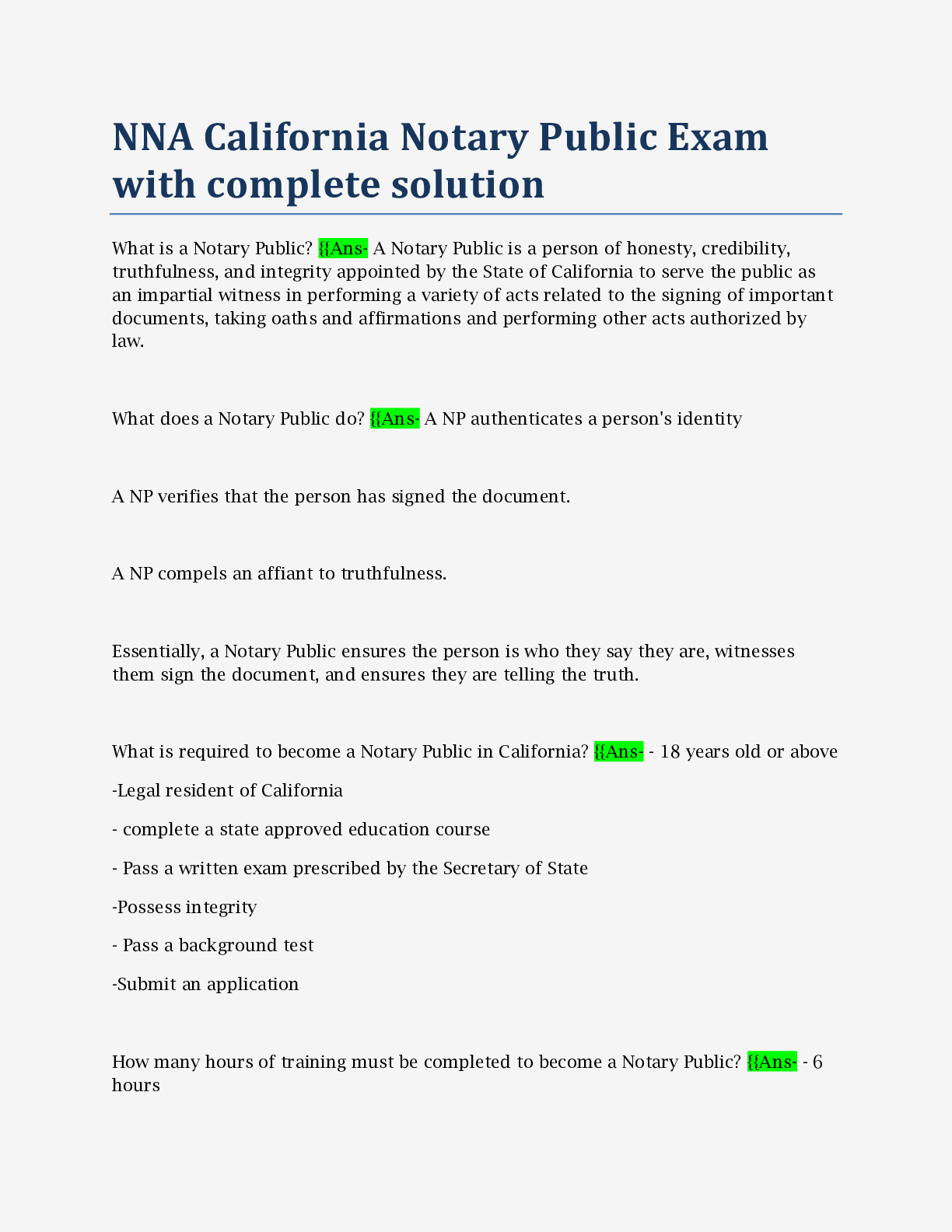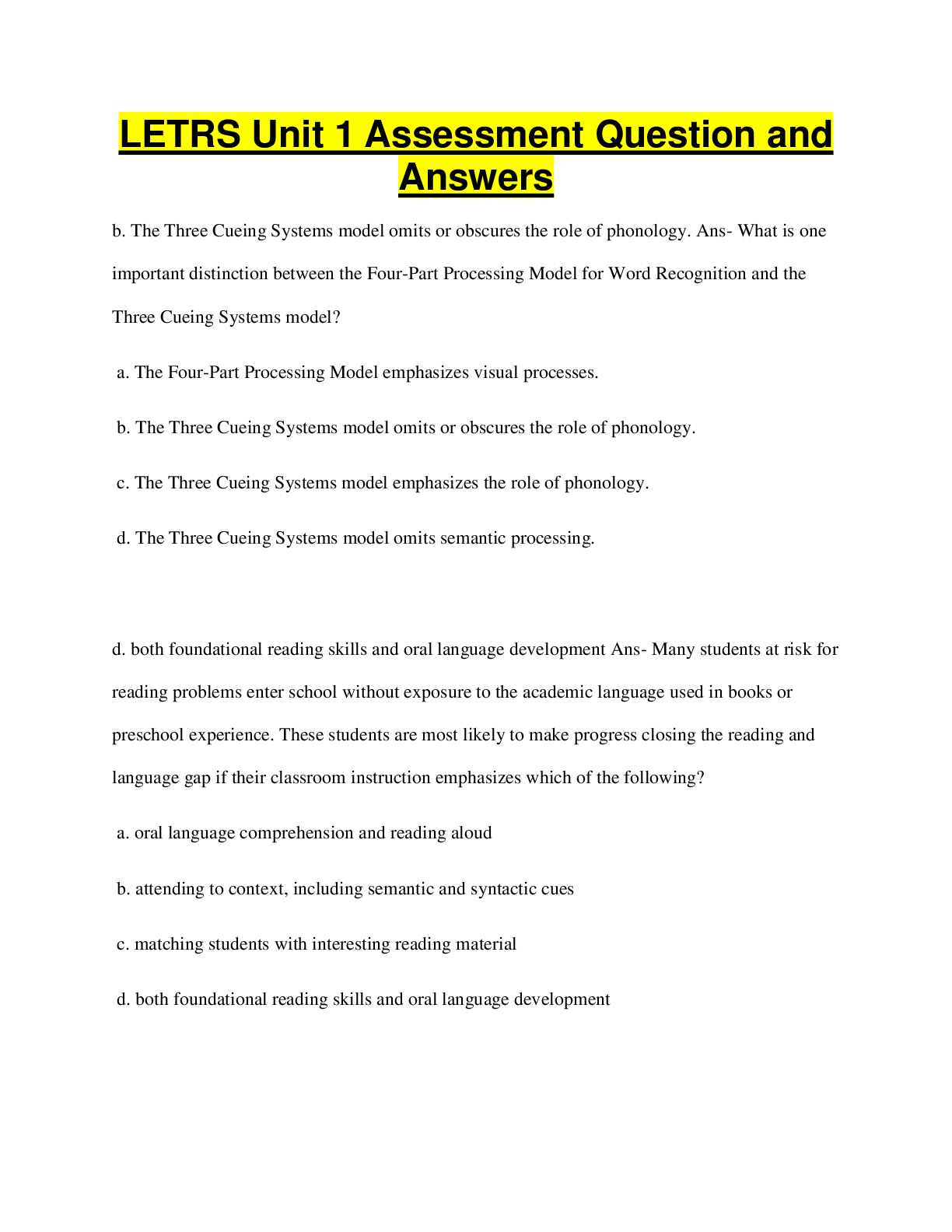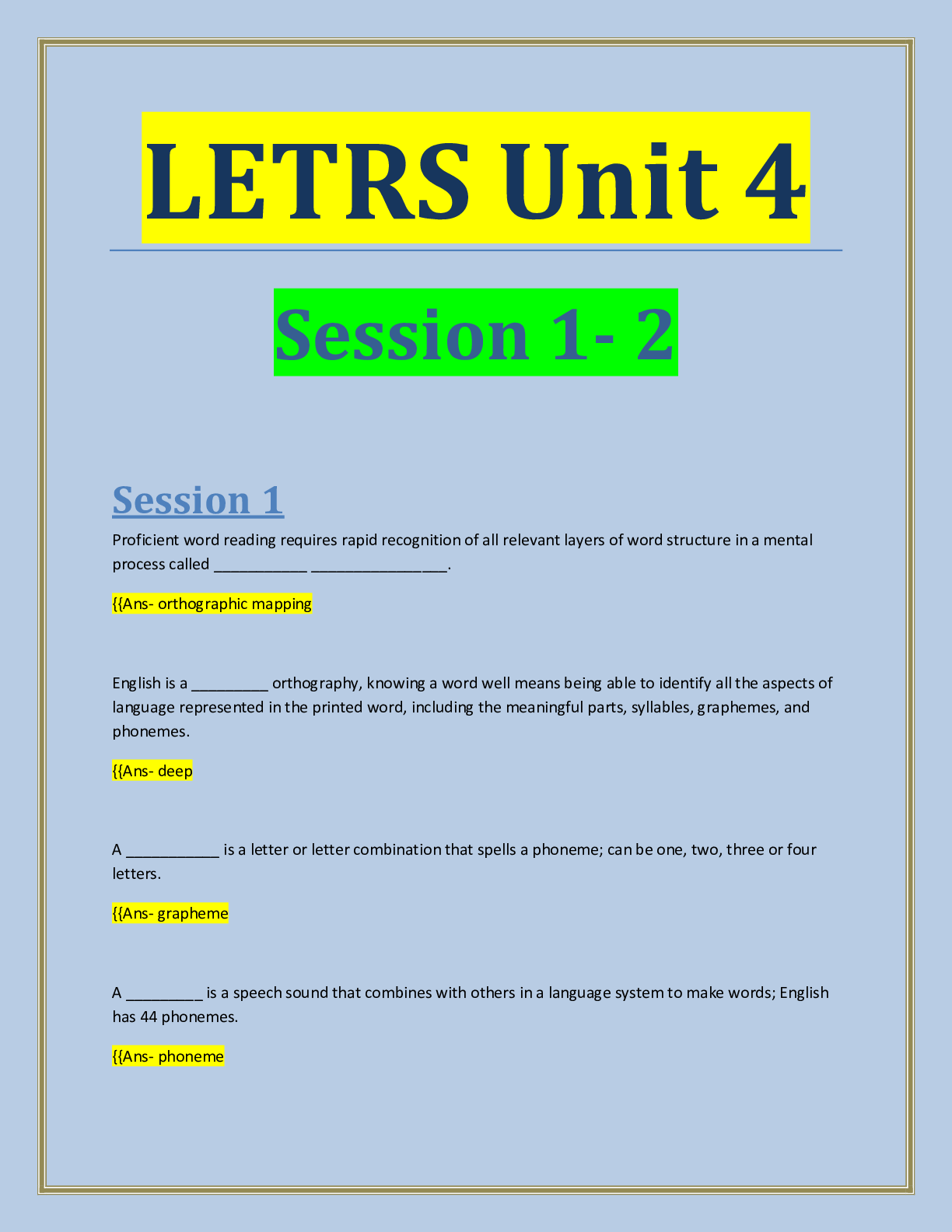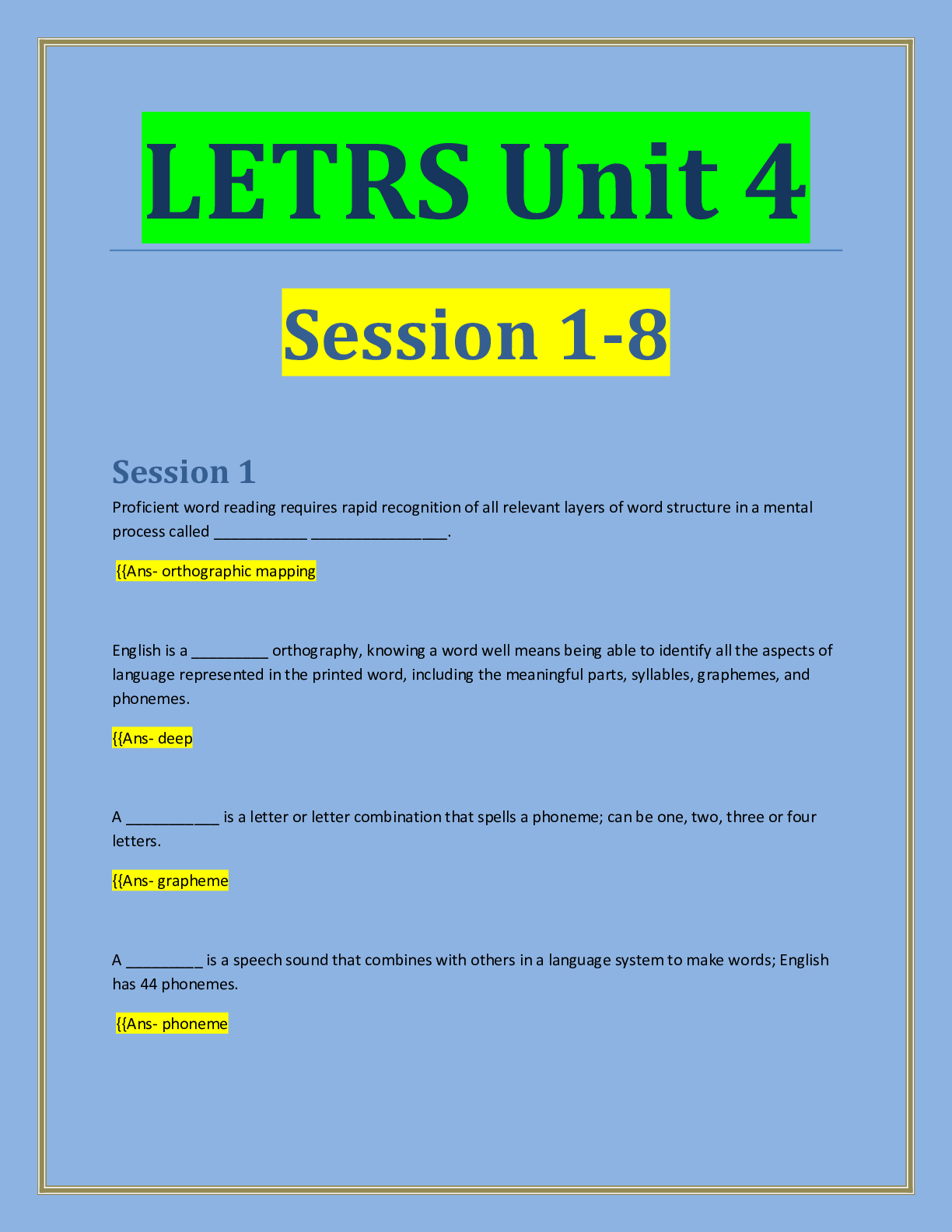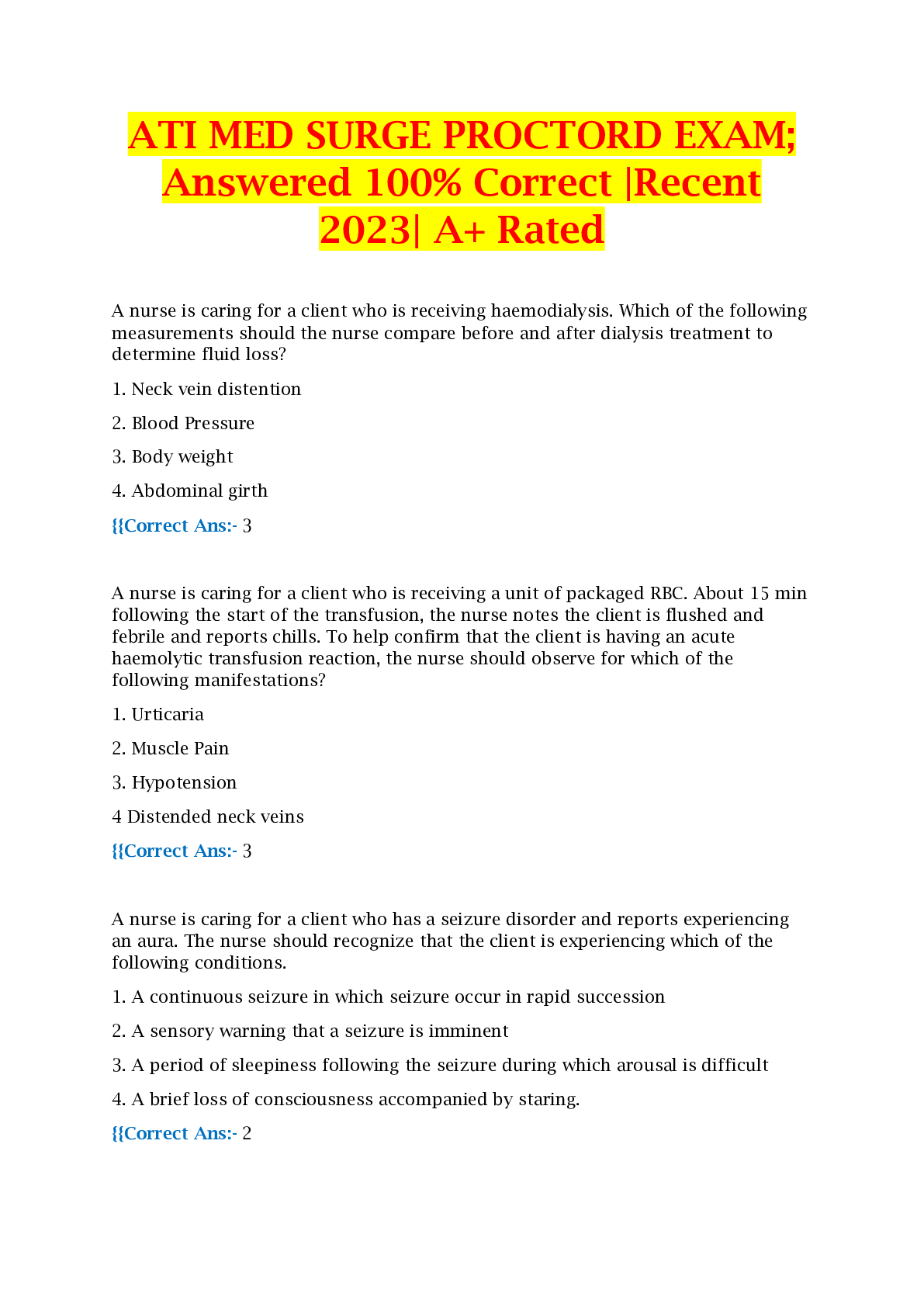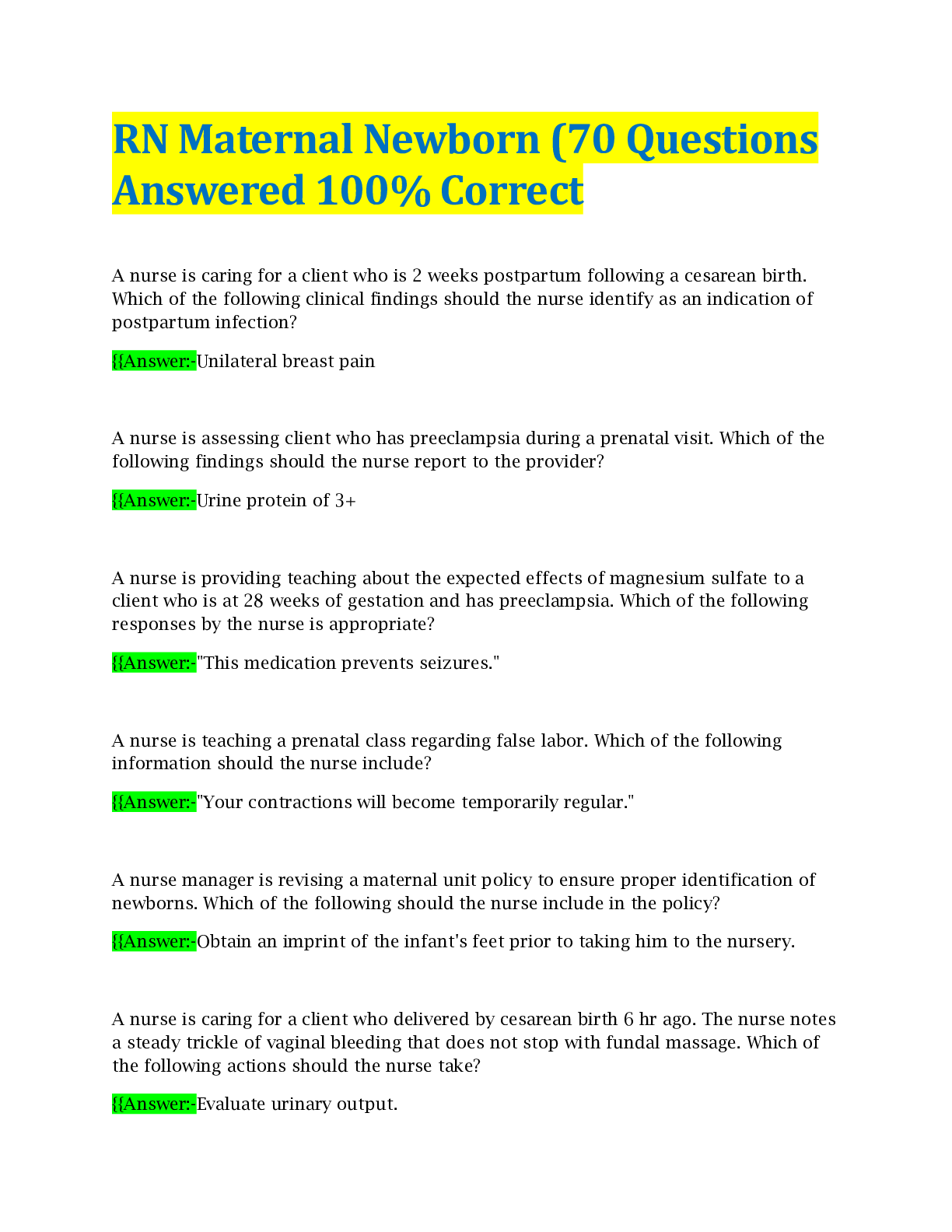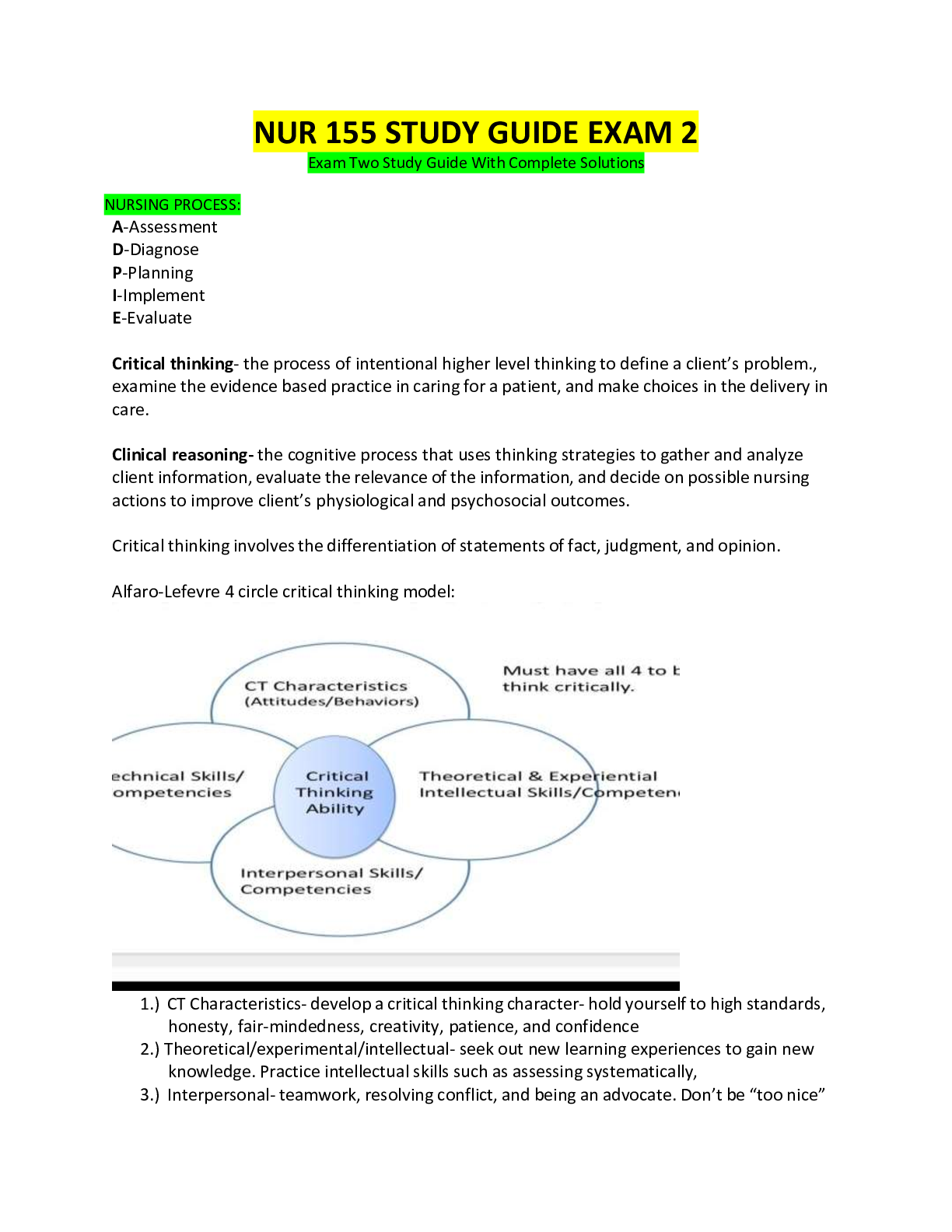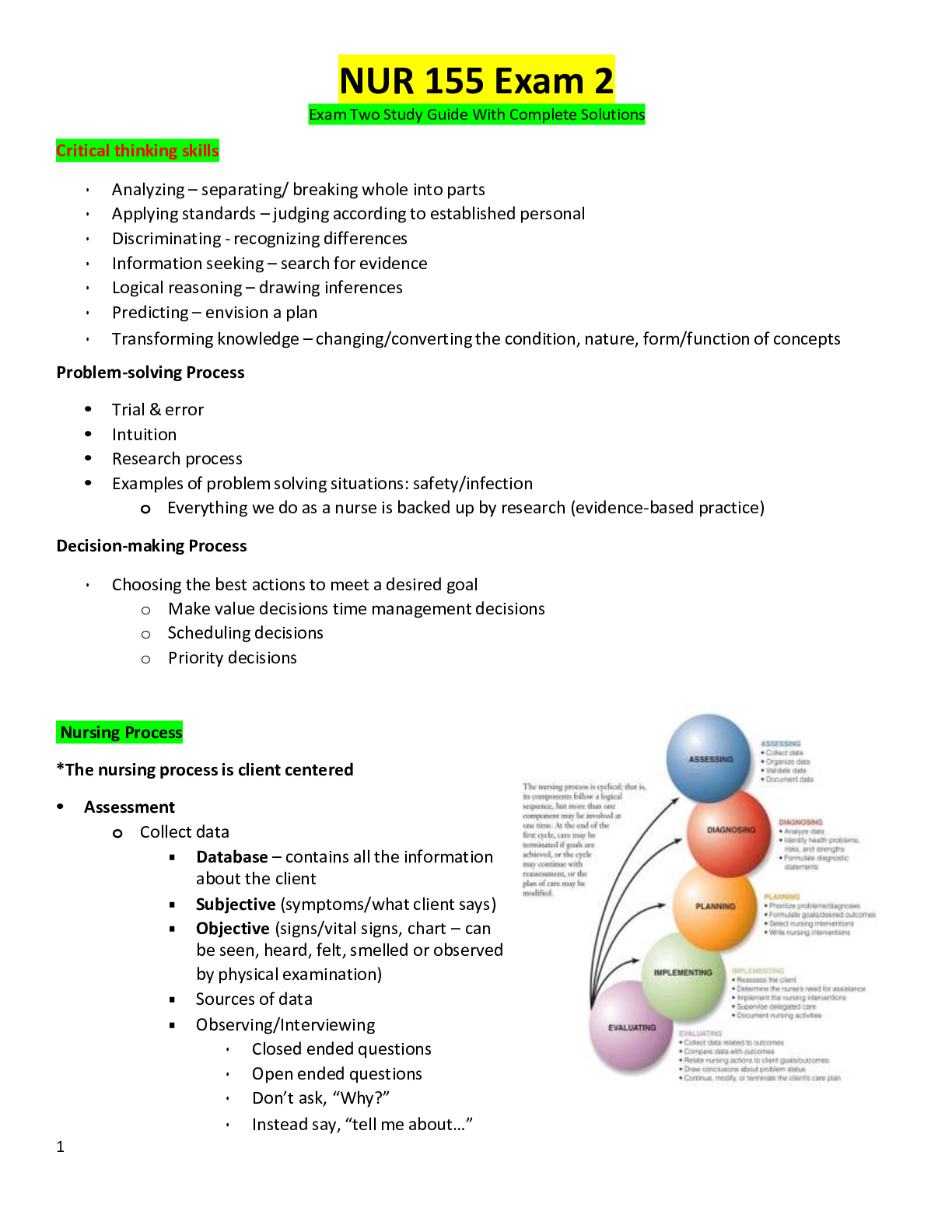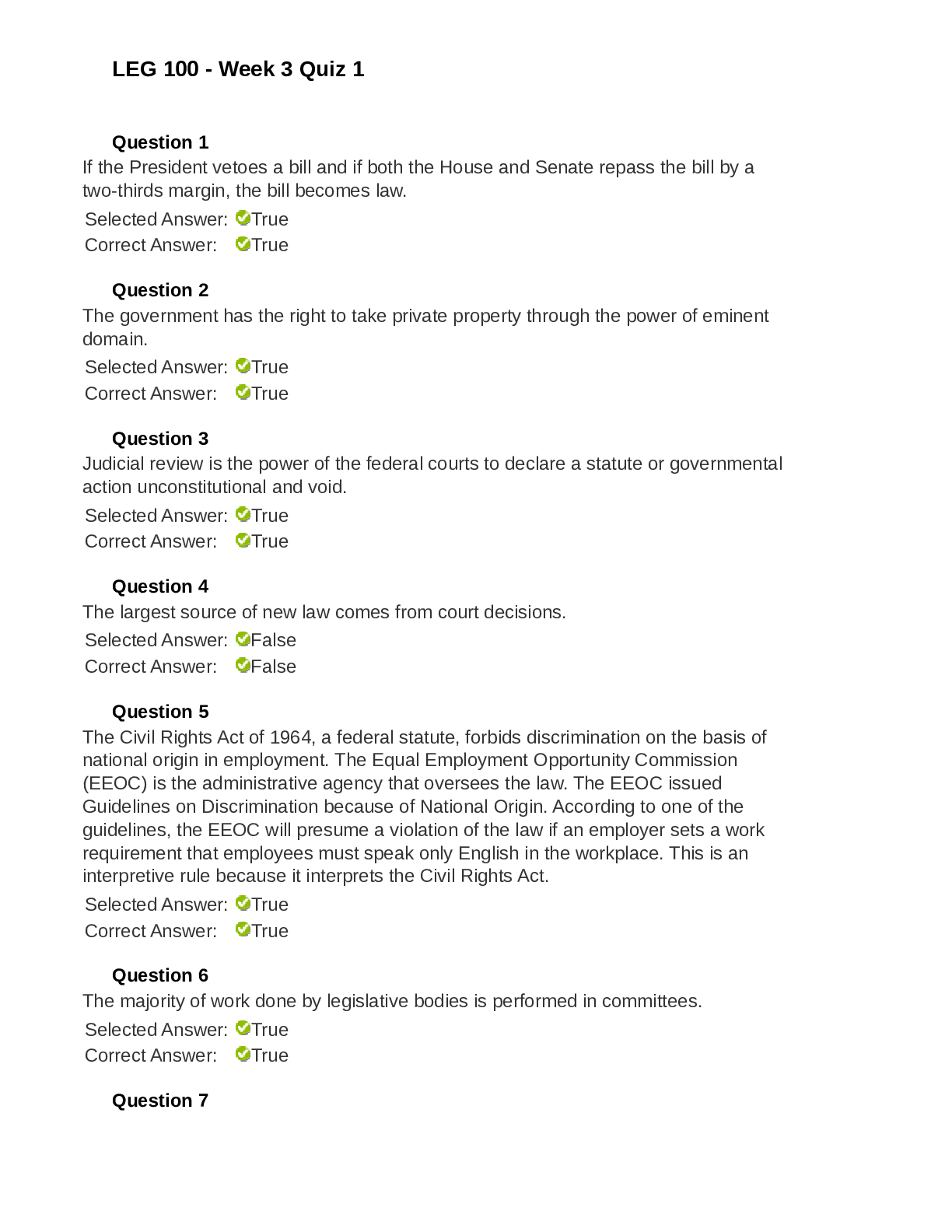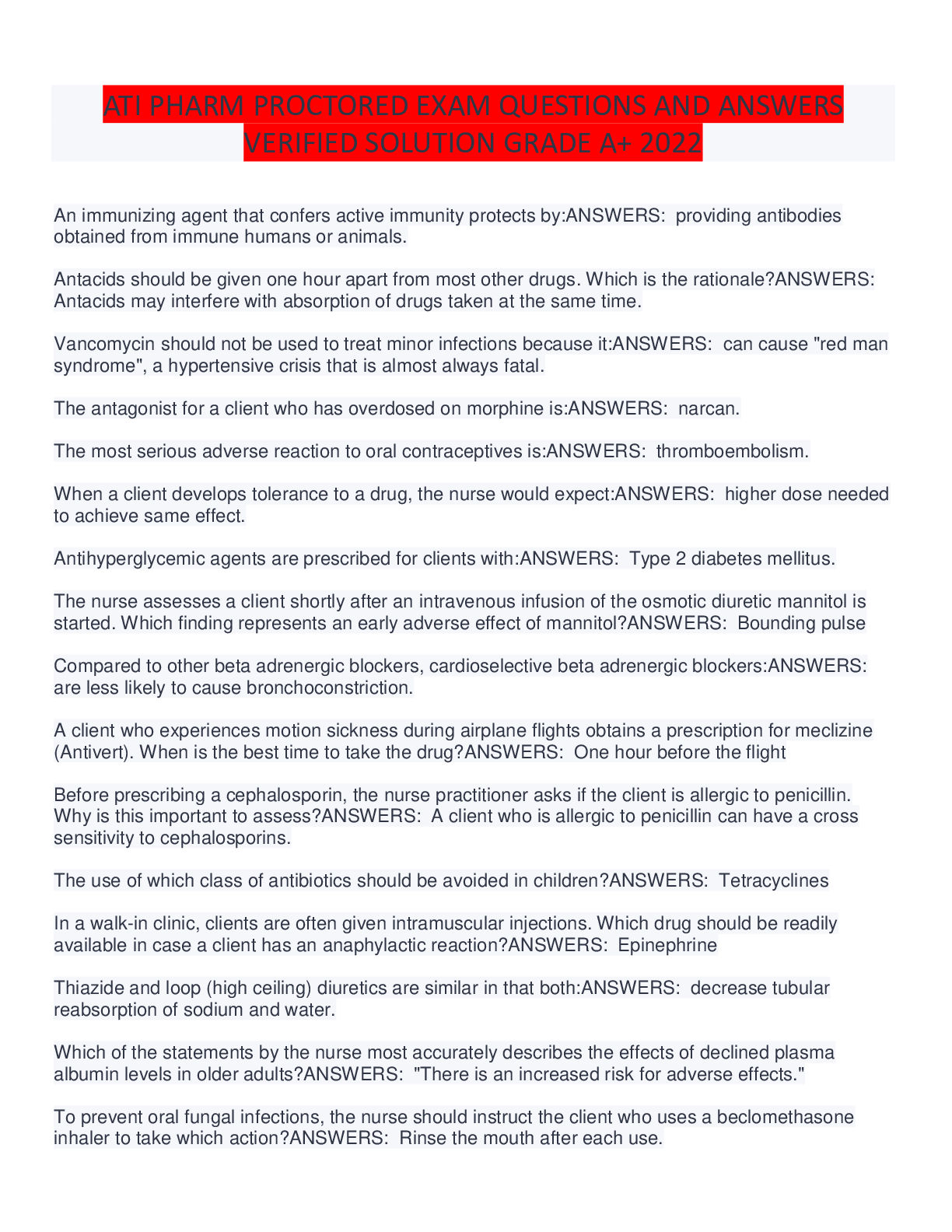ATLS Written Review Latest complete solution Grade A
Document Content and Description Below
ATLS Written Review Latest complete solution Grade A What is the primary goal of treating TBI? How is this done? {{Correct Ans- preventing secondary brain injury. This is done by maintaining blood ... pressure and providing adequate profusion. After managing ABCDEs of TBI what MUST be identified if present? How is this done? {{Correct Ans- mass lesion that requires surgical evacuation is critical! this is done with CT. NOTE: obtaining a CT should not delay patient transfer to trauma center. Which brain lobes do the following hold: 1. anterior fossa: 2. middle fossa: 3. posterior fossa: {{Correct Ans- 1. anterior fossa: frontal lobes 2. middle fossa: temporal lobes 3. posterior fossa: lower brainstem and cerebellum What are the 3 layers of the meninges? {{Correct Ans- dura mater, arachnoid mater, pia mater What does the dura mater adhere firmly to? {{Correct Ans- the skull. it is tough and fibrous What layer of the meninges splits into two leaves as specific sites to enclose large venous sinuses? What do these sinuses do? {{Correct Ans- dura mater. these sinuses provide major venous drainage from the brain. What is the midline sinus of of the brain that splits into two sinuses: bilateral transverse and sigmoid sinus? What side are these bigger on? {{Correct Ans- The main sinus enclosed by the dura major is the midline superior sagital sinus. This splits into the sigmoid and bilateral transverse sinuses which are larger on the right side. What are the arteries that lie between the skull and the dura mater (epidural space)? {{Correct Ans- meningeal arteries. What is the most commonly injured meningeal artery and where is it located? {{Correct Ans- middle meningeal artery. Located over the temporal fossa T/F: the arachnoid mater is fused to the dura mater? {{Correct Ans- FALSE: not attached. This produces a potential space for a subdural hematoma In a subdural hematoma, what is the cause? {{Correct Ans- injury to bridging veins that extend from brain surface to the sinuses within the dura. _______ fills the space between the arachnoid and pia mater? {{Correct Ans- CSF. this cushions the brain and spinal cord. What location of brain hemorrhage is frequently seen in brain contusion or injury to major blood vessels at base of brain? {{Correct Ans- subarachnoid. The ____ and _____ contain the reticular activating system which is responsible for ____. {{Correct Ans- midbrain and upper pons state of alertness What important function resides in the medulla? {{Correct Ans- cardiorespiratory centers. What important functions are in the following brain segments: 1. left hemisphere: 2. frontal lobe: 3. parietal lobe: 4. temporal: {{Correct Ans- 1. left hemisphere: language center 2. frontal lobe: executive function, emotions, motor 3. parietal lobe: sensory function/spatial orientation 4. temporal: memory functions What divides the brain into supratentorial and infratentorial compartments? {{Correct Ans- tentorium cerebelli. (tent over cerebellum) What is the physiology behind a blown pupil? {{Correct Ans- blown pupil: dilation of pupil -CN III runs along the tentorium cerebelli. parasympathetic fibers that constrict the pupil run along CN III (oculomotor). When temporal lobe is herniated, it can compress these fibers. Unapposed sympathetic activity causes pupillary dilation. What is the tentorial notch/hiatus {{Correct Ans- this is where the midbrain passes through into the infratentorial compartment. what part of the brain most commonly herniates through the tentorial notch? {{Correct Ans- Uncus (medial part of temporal lobe) does weakness occur on the same or opposite side of the uncal herniation? {{Correct Ans- OPPOSITE. the corticospinal tract of the midbrain is compressed and then crosses at the foramen magnum. state: Ipsilateral/contralateral ____ pupillary dilation associated with _____ hemiparesis is the classic sign of uncial herniation. {{Correct Ans- ipsi contra average ICP is _____ mmHg. {{Correct Ans- 10 The monro-kellie doctrine states that the total volume of intracranial contents must remain constant, because the cranium is ___ {{Correct Ans- a rigid, non expandable container. The monro-kellie doctrine states that _____ and _____ may be compressed out of the skull providing a degree of buffering. {{Correct Ans- CSF and venous blood. [Show More]
Last updated: 1 year ago
Preview 1 out of 13 pages
Instant download

Buy this document to get the full access instantly
Instant Download Access after purchase
Add to cartInstant download
Reviews( 0 )
Document information
Connected school, study & course
About the document
Uploaded On
Sep 14, 2022
Number of pages
13
Written in
Additional information
This document has been written for:
Uploaded
Sep 14, 2022
Downloads
0
Views
30

